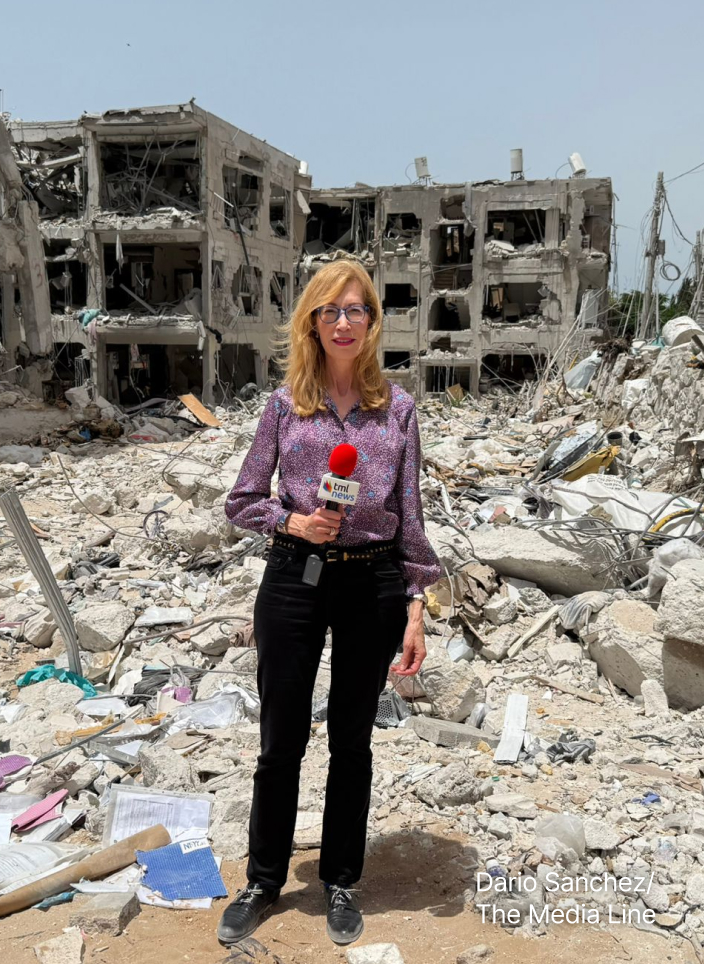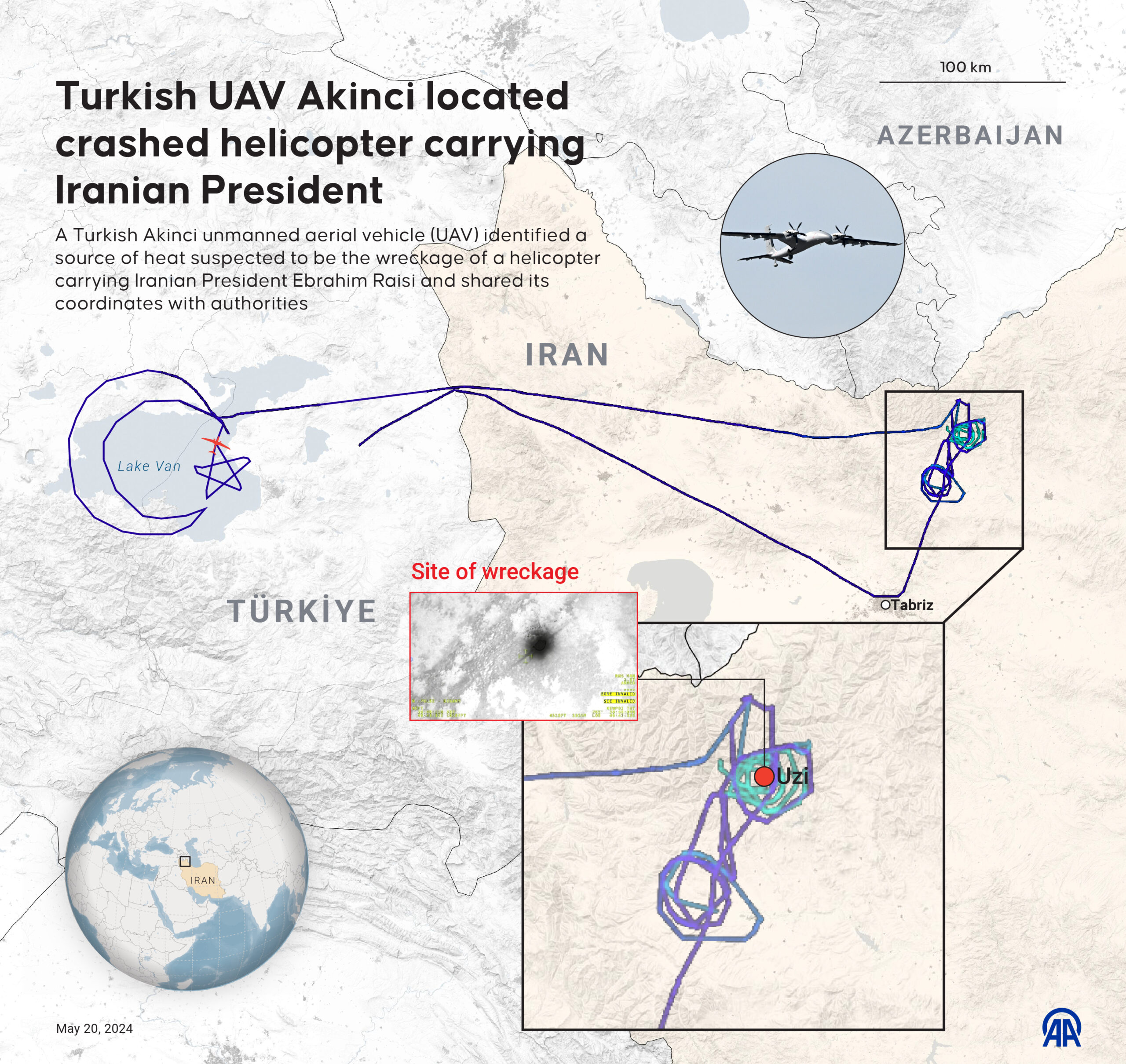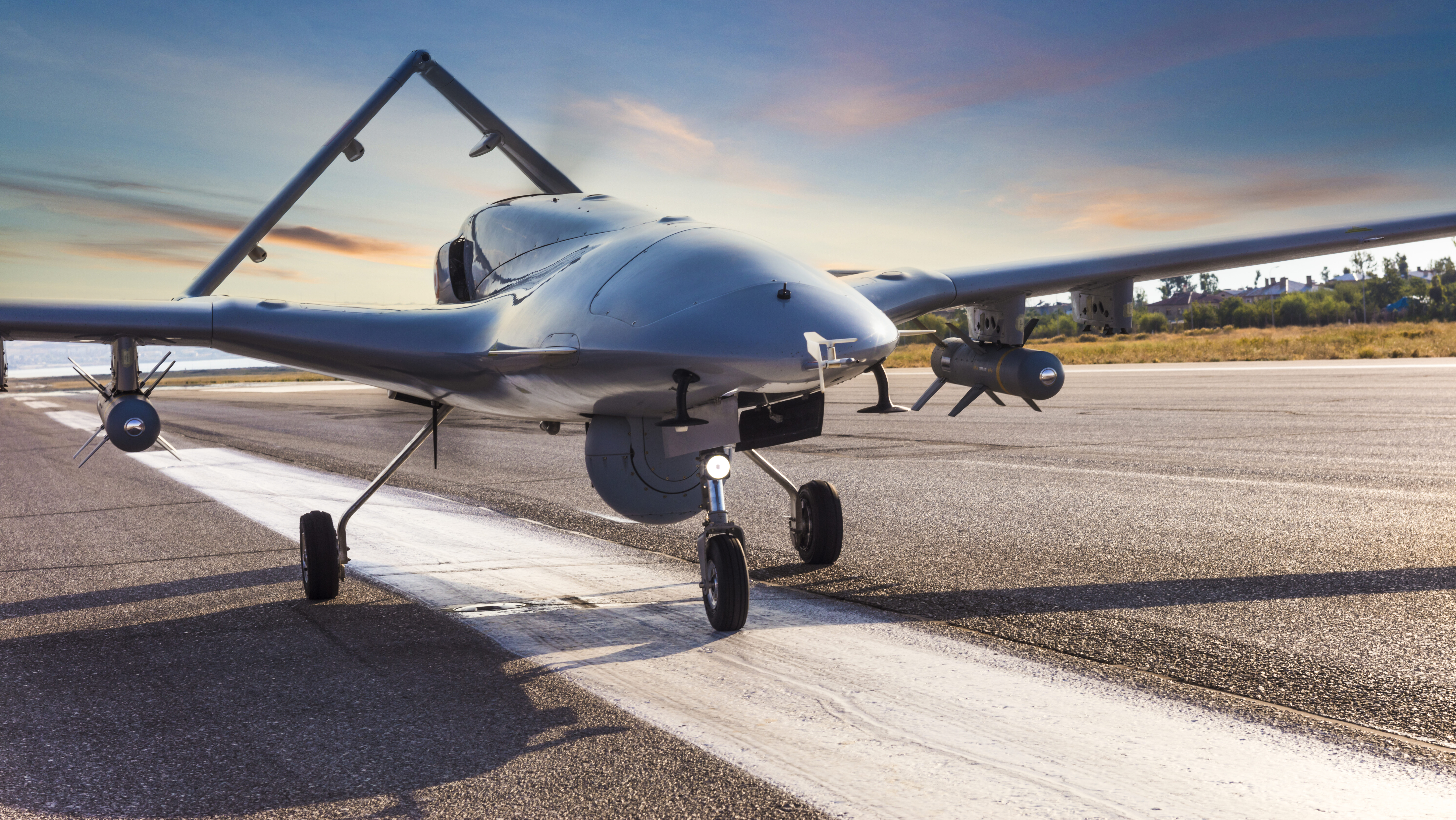Turkey Drone Industry To Get Boost Over Role in Search for Raisi Crash Site, Analysts Say
The drone purported to have helped find the site is made by a company owned by the Turkish president’s son-in-law
The Turkish drone industry will get a boost after claims that one of its drones helped locate the site where Iranian President Ebrahim Raisi’s helicopter crashed, analysts told The Media Line.
The Bayraktar Akinci drone from Baykar, a company owned by Turkish President Recep Tayyip Erdoğan’s son-in-law, carried out the mission.
According to Baykar’s website, the drone can get as high as 40,000 feet, stay in the air for 24 hours, have both air-to-air and collision avoidance radars, and use artificial intelligence for its electronics system.
Tolga Özbek, an aviation expert in Turkey, told The Media Line that the Bayraktar Akinci drone has two powerful engines, can go fast, and has a sophisticated camera that detects temperatures. This camera allows the drone to identify areas with heat, which could suggest a crash site.
Such capabilities make the drone especially valuable in hard-to-reach areas, such as mountainous terrain covered in heavy fog, where Raisi’s helicopter was found.
“Very few drones can fly [at] this very high altitude, can stay there [for] a very long time, and can carry sophisticated cameras,” Özbek said.
While Baykar states that its drone can also be used for air-to-ground and air-to-air attack missions, Özbek said the Raisi crash site mission showed alternative reasons to use the drone beyond military operations.
Özbek estimated that one of the Bayraktar Akinci drones would cost around $50 million.
Give the gift of hope
We practice what we preach:
accurate, fearless journalism. But we can't do it alone.
- On the ground in Gaza, Syria, Israel, Egypt, Pakistan, and more
- Our program trained more than 100 journalists
- Calling out fake news and reporting real facts
- On the ground in Gaza, Syria, Israel, Egypt, Pakistan, and more
- Our program trained more than 100 journalists
- Calling out fake news and reporting real facts
Join us.
Support The Media Line. Save democracy.


On Monday, the Turkish state-run news agency reported that Iran was given coordinates after Baykar’s drone detected heat, which suggested it had located the helicopter wreckage.

”Turkish UAV Akinci located crashed helicopter carrying Iranian President,” created in Ankara, Turkiye on May 20, 2024. (Yasin Demirci/Anadolu via Getty Images)
However, on Wednesday, Iran refuted this report, saying that it was not the Turkish drone that found the crash site but its drones that helped identify where the wreckage was located.
Ryan Bohl, a Middle East analyst for the risk intelligence company RANE, told The Media Line that Turkey’s membership in NATO means it can buy more advanced technology from Western allies to enhance its drones’ capabilities, giving them a competitive advantage over Iranian drones.
Bohl said that elements, such as radar detection, on Turkish drones sourced from Western countries, would make them more capable than Iranian drones in search and rescue operations.
In comparison, Bohl said, Tehran would have difficulties obtaining parts to manufacture advanced drones, partly due to US sanctions.
In addition, countries such as China would be reluctant to provide technology for Iranian drones, which could, consequently, become involved in Iranian attacks, like its previous airstrikes on Israel.
Being part of NATO has given [Turkey] access to these technologies for decades that has allowed them to keep up with the development of drones.
“Being part of NATO has given [Turkey] access to these technologies for decades that has allowed them to keep up with the development of drones,” Bohl said.
He added that the use of the Bayraktar Akinci drone revived attention around Turkey’s drone industry, which was waning given that their use in the war in Ukraine was declining.
Bohl said the recent search mission allowed Turkey to help a US rival without alienating Washington.
This mission “lets Turkish interests be served without creating much risk to it. So, it’s really a great example of Turkey’s middle power position and how their government is positioning their policies and military strategies around that,” he said.
While Turkey and neighboring Iran have competing interests, such as supporting opposing sides in Syria, they have also cooperated on the world stage.
In January, Erdoğan and Raisi met to discuss the war in Gaza. Following the meeting, the Turkish president said he agreed with his counterpart that there was a need to avoid escalating tensions.
Selçuk Bayraktar, head of Baykar, said that the Bayraktar Akinci drone went into terrain that an aircraft in normal conditions would not have been able to do, according to the Turkish state-run news agency.
Timothy Ash, an economist focused on Turkey and a strategist at BlueBay Asset Management told The Media Line that Turkey’s recent drone use was a great marketing opportunity.
“The Turks have demonstrated the best capability. Imagine flying a hundred or so meters off the ground in terrible weather, with high winds,” Ash wrote in a message to The Media Line.

